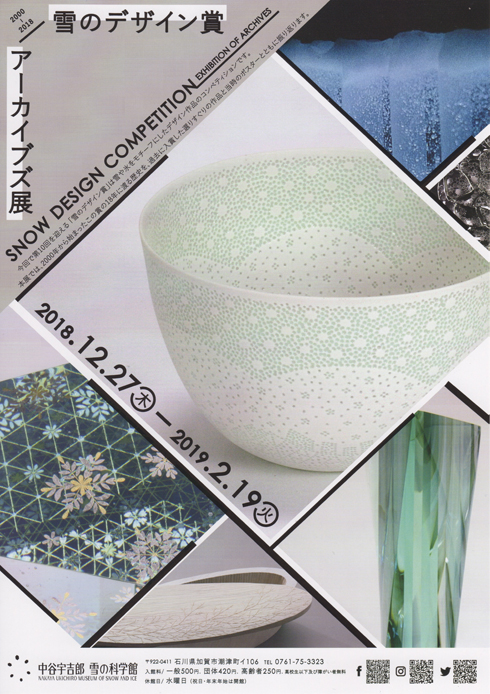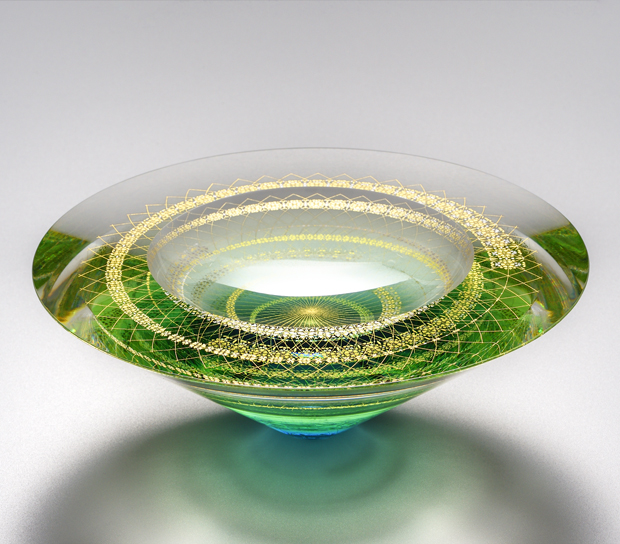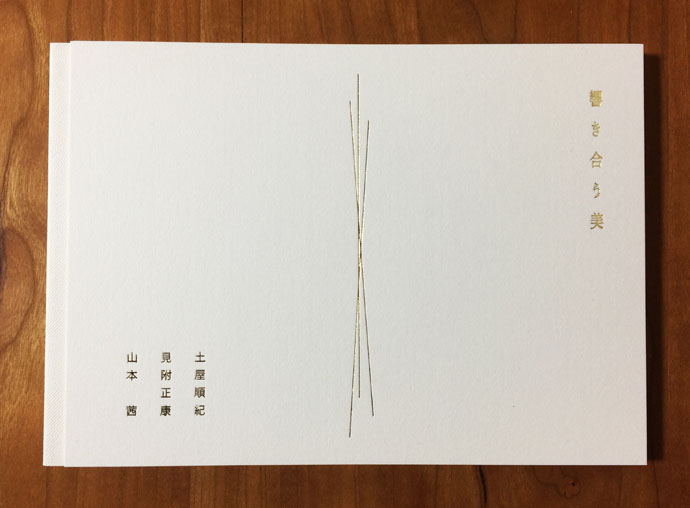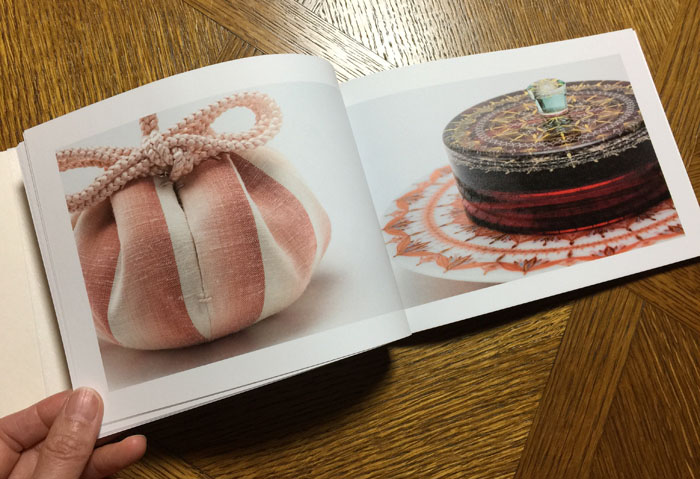An article I wrote about my work for the “Sophia Kyoto Shimbun Cultural Congress” series was featured in the June 29th morning paper.
“Composing The Tale of Genji with Kirikane Glass”
Please enjoy a translation of the article below.
“Composing The Tale of Genji with Kirikane Glass”
I am the world’s only Kirikane Glass artist. As the name suggests, Kirikane Glass put simply is a way of trapping Kirikane within a three-dimensional glass form, which–much like a kaleidoscope–allows the Kirikane countless different expressions due to the optical effects of the reflections and refractions.
Kirikane is an ancient method of creating extremely delicate patterns by adhering fine strips of gold foil to a surface, used mainly to decorate Buddhist sculptures and paintings. It was brought into Japan along with Buddhism during the 6th century, and was well received among the aristocrats of the capital in Kyoto during the Heian Period. Kirikane was at its peak during this period and the technique has been passed down to today, mainly in Kyoto. Some readers might have seen Kirikane at temples or museums, as it was applied quite frequently to the fine Buddhist statues and paintings of the Heian period.
After having long aspired to make Kirikane stand on its own as a work of art instead of limiting it to a mere decorative element, I decided to try suspending it within a three-dimensional space by trapping it inside a clear glass structure–and this was how Kirikane Glass came to be. I have been grappling with both Kirikane and glass ever since.
My work is inspired by the nature of the four seasons and by works of literature, but in particular, I consider it my life’s mission to create a body of work based on the 54 chapters of The Tale of Genji. I am in the process of creating a three-dimensional abstract piece based on the most memorable scenes in each of the chapters, and dream of having a museum exhibition when the series is complete. I have finished 20 pieces so far; 34 pieces remain. It is a long way to go. I will refrain from giving a full explanation of why The Tale of Genji is so significant, as that would go well beyond these pages–but in short, it has been my favorite book since my middle school days. Even the very reason I entered Kyoto City University of Arts was because I dreamed of creating an emaki picture scroll with beautiful paintings like those by the master artist Shōen Uemura. My direction shifted when I discovered the beauty of Kirikane during my University years, but the core of what I want to express has remained the same. On top of that, Kirikane is an art form that was at its height during the Heian period–the very era during which The Tale of Genji was born–and is thus the perfect technique for this body of work because it embodies the elegance of that time.
Part of the process in creating these pieces is to let my imagination flow by visiting the actual places that appear in the story. Wandering around the city of Kyoto, I discovered an area called “Yūgaochō(Yūgao*-neighborhood)”, and many other things that cause me the illusion that perhaps The Tale of Genji is not fiction, but true history. The world of The Tale of Genji is very much alive in Kyoto, even today. I live in the mountainous regions so I am also able to experience nature just as it is depicted in the story; the misty mountains, the fireflies flitting about, or the cry of the deer, all become a source for the images I create.
Working on Kirikane in my studio, sometimes I find myself experiencing the strange sensation that the ends of the gold lines somehow connect to the Heian period. I carry the technique and spirit of that era forward and strive to bring The Tale of Genji to life through my work, reinventing Kirikane as a three-dimensional expression within the glass.
* “Yūgao”: the title of one of the 54 chapters, and the nickname of one of the lovers of the Tale’s protagonist, Hikaru Genji.



